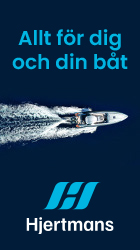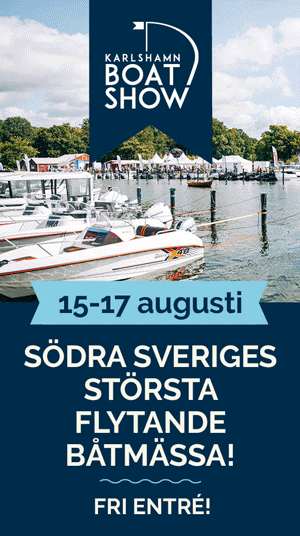Nu är spänningen på topp inför den kommande upplaga av Volvo Ocean Race, som startar i morgon i spanska Alicante. Hela flottan med sex olika team har laddat batterierna och är redo att kappsegla över nio oceaner jorden runt i ett extremt tempo. För oss som sitter hemma finns det väldigt bra möjligheter att följa med ombord via TV och andra medier. Dessutom sänder TV10 starten av Volvo Ocean Race direkt från Alicante 5 november kl. 13.45.
Väderutsikterna inför starten i Alicante säger att de blir 12-13 m/sek vind, vilket betyder att det kan dra upp ganska rejäl sjö. Starten går kl. 13.00 UTC (1400 lokal tid). I den krabba sjö som brukar råda utanför kan det bli en spännande start när de nya Volvo Open 70 båtarna börjar sin 6 500 Nm långa första delsträcka till Kapstaden.
– Väderförhållandena blir idealiska för de här båtarna med snabb segling i frisk bris, säger racets chefsmeteorolog, Gonzalo Infante.
– Inom tolv timmar, när båtarna börjar sin första nattsegling, startar den första kryssen i 12-13 m/sek motvind.
Ken Read, skeppare på PUMA Ocean Racing powered by BERG, säger:
– Det verkar som om vi kan få en rejäl utmaning redan när vi är på väg ut ur Medelhavet.
Leg 1 omfattar allt från det oförutsägbara Medelhavet, tidvattensflaskhalsen i Gibraltar och de starka nordliga vindarna utanför Nordafrika innan båtarna seglar söderut i Doldrums, som är en stadig högtrycksrygg på några hundra Nm på vardera sidan om ekvatorn.
Efter Doldrums kommer båtarna att sträcka ut mot den brasilianska kusten för att plocka upp så mycket vind som möjligt och undvika allt för svaga vindar. Därefter blir det segling rakt mot mål i Kapstaden, Sydafrika.
Det snabbaste någon båt har seglat hittills står Ericsson 4 för i förra racet, då de noterade 596,6 Nm på 24 timmar.
Här följer mer informatiojn på engelska i VOR:S egen pressrelease inför starten:
Ian Walker’s Abu Dhabi Ocean Racing go into the first offshore leg at the top of the leaderboard with six points after victory in the Iberdrola In-Port Race. PUMA finished second, followed by CAMPER with Emirates Team New Zealand, Team Sanya, Groupama sailing team and Team Telefónica.
Walker, a two-time Olympic silver medallist, said the first 24 hours of the leg could prove crucial to the end result.
“The big question will be whether we can get out of the Med quick enough to connect with the trade winds,” the Briton said. “We’ll see over 20 knots upwind and that’s enough to break these boats. It could be that the most decisive point of this leg is the first 24 hours.”
Mike Sanderson, skipper of Chinese entry Team Sanya, knows all too well about sailing into heavy weather. He led ANB AMRO ONE to victory in the 2005-06 race when a storm ravaged the fleet hours after the start from the Spanish port of Vigo.
“There’s nothing that starts quite as quickly as a Volvo Ocean Race — you’re into it straight away,” the New Zealander said. “We’re going to see some action pretty quickly. It’s looking like it could be pretty churned up out there.”
Despite the forecast, CAMPER’s Australian skipper Chris Nicholson said his team were keen to get started on leg 1, which is expected to keep the 11-man teams, including one embedded Media Crew Member, at sea for an exhausting 21 days.
“We are all over that kind of weather,” Nicholson said. “We have had it since day one of the launch. It’s not a problem for us. We may well see 30 knots on the nose before we get to the Gibraltar Straits and that’s OK. We had 45 knots on the way down to Alicante from the UK so we’re up for 30 knots for sure.”
Franck Cammas, charged with leading France’s first entry in 18 years, said his team were in “the racing frame of mind” as the clock ticked down to the start.
“We are ready,” the Groupama 4 skipper said. “We are looking at the weather and it’s as if we are already racing. We have been preparing for a long time and we are happy to be leaving on Groupama 4 which has shown its potential and looks promising offshore.”
Iker Martínez said Telefónica would be looking to show what his crew is capable of in the offshore legs, which offer five times as many points as the in-port races.
“I’m feeling good but a little bit nervous, not because I’m worried about anything in particular but because we have spent a long time preparing and we want to have a good race,” said Martínez, who has gold and silver Olympic medals to his credit. “We didn’t have a very good inshore race and that’s given us even more determination to prove ourselves.”
Ever since the Volvo Ocean Race became a single-class event in 1997-98 the winners of the first leg have gone on to take overall victory.
“I’ve heard it several times this great tradition that you have to win leg one to win the race, but I’m not so sure about that this time,” said Read. “I think this is setting up to be too close.”
Before the teams leave Alicante, fans will get a final chance to see the fleet up close, as they complete a short course along the Alicante shoreline starting near the port, heading to Albufereta then up to Cabo de Huertas and back before setting sail for the open sea. The leg start will be shown live through the New Livestream platform, which includes video, photos, audio and text updates at http://new.livestream.com/volvooceanrace.
You don’t have to be onboard one of our Volvo Open 70s to find out what’s going on out on the racecourse. There are plenty of ways you can follow the racing at home and on the move, find out here how to follow the race.
Info: www.volvooceanrace.com
Foto: IAN ROMAN/Volvo Ocean Race.






.jpg)






